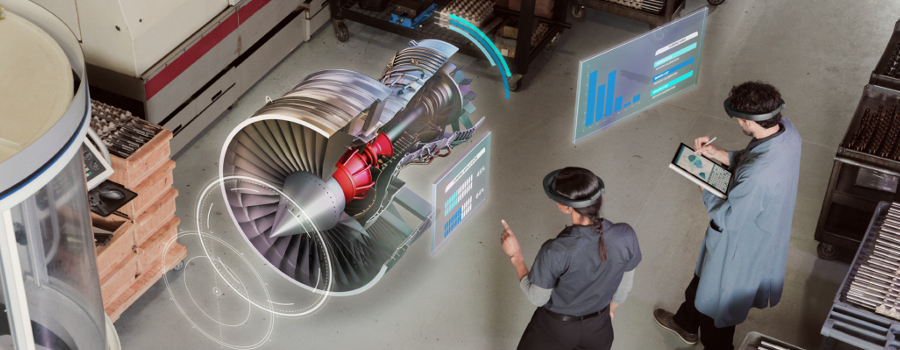How Aveva developed engineering apps for HoloLens

By Asavin Wattanajan tra
tra
The HoloLens has enormous potential in engineering – augmented reality can change the way industrial projects are executed and managed. The HoloLens can exceed in areas where VR headsets have not, as the ability to overlap CAD models with the real-world environment provides engineers significant interactive opportunities.
One of the companies working in this field is Aveva, a British IT company spun out from technology developed at Cambridge University, which is now an international business with over 1,700 employees. It specialises in engineering, design and information management, providing software to the processing, plant and marine industries.
Aveva has worked with Microsoft technology in developing two applications, highlighting the potential of immersive computing and mixed reality in the industries it serves.
The first is called the 'Aveva Holo Demo'. Available for free in the Windows Store, it's an experiential marketing application that gives users an introduction to its work and the power of mixed reality. The second is a more internal-focused functional app that that allows Aveva to show customers their own models in mixed reality – a model viewing application that works with multiple users.
The Aveva Holo Demo
The Aveva Holo Demo is all about showing users the potential of 3D visualisation in complex processing industries like oil and gas, power and petrochemicals, with mixed reality in the HoloLens. With the app, customers can see what an oil platform looks like in 3D augmented reality.
After viewing a 2D drawing of the oil platform, the HoloLens allows a user to see a 3D model come out of the drawing in a 1:8 scale. Through the tool, users can manipulate this 3D model by increasing its size, as well as adding colour and audio. Increasing the model to its full size results in the user seeing a platform that is about 10 feet tall. The user can immerse themselves with the full-size model, being able to walk through it and get close and personal, viewing intricate details.
The HoloLens user can then visualise an oil worker and ‘air-tap’ them into the model. A full-size model will of course dominate a room - so there is a teleporting capability which allows a user to move around the model at their leisure. The 3D spacial sound further increases the realism of the experience.
With this kind of tool, engineers will be able to pinpoint troubleshooting procedures in a way which would be impossible through a 2D drawing. For industrial projects, this allows users to directly view information, such as technical drawings, installation plans and data sheets, in an incredibly visual way.
Getting started
Aveva has a long history of working with Microsoft. For instance, it has previously developed a Windows app for touch-enabled devices that allowed users to manipulate plant design models in real time. These were very useful for industries working in the oil and gas, power, processing and mining industries. Working with the HoloLens is a natural progression, as it expands on the work Aveva have already done with Universal Windows Apps.
To create the HoloLens app, Aveva initially worked with Microsoft and attended hackathons to get the project going, and proceeded to develop it in-house. The company used developer support in the form of the SDK and Holographic Academy. Developers at Aveva also made use of Unity integration – the remoting function in Unity helped the ease of deployment of apps to the device.
Aveva has already developed an internal tool which allows customers to show their own models in mixed reality. However, in the future, Aveva plans to develop an SDK that will allow any HoloLens developers access to Aveva data and 3D models, directly from a managed digital asset platform. It’s also working with Microsoft to develop a streaming toolkit that will enable developers to stream larger 3D models to the HoloLens from the Azure GPU cloud.
For developers interested in working with the HoloLens on a 3D app, the Holographic Academy tutorials are a great place to start. If you’re not familiar with Unity, the official Unity website has some great resources to get started.
You’ll need the latest Visual Studio 2015 update, HoloLens emulator or a HoloLens device, and for development of 3D apps the latest Unity technical preview for HoloLens. You can install the tools from here and try your hand at HoloLens development.